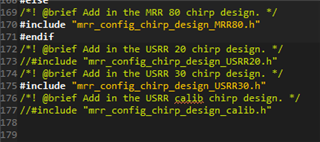Other Parts Discussed in Thread: AWR1843AOP
Tool/software:
Hello Ti team,
I am using the MRR application on the AWR1843AOPEVM and logging radar data over a 500 kbps baud rate in Classic CAN_frame.
For testing, I moved from 6 meters towards the radar, staying within the -1m < x < 1m range. The 0xD1 message consistently appears in the packets, but my position data is not always present. Sometimes, my position appears in one packet but is missing in the next, and some times it occurred the 4th packets of radar after getting first data .
please suggest any solutions?
Thanks
Mitesh


